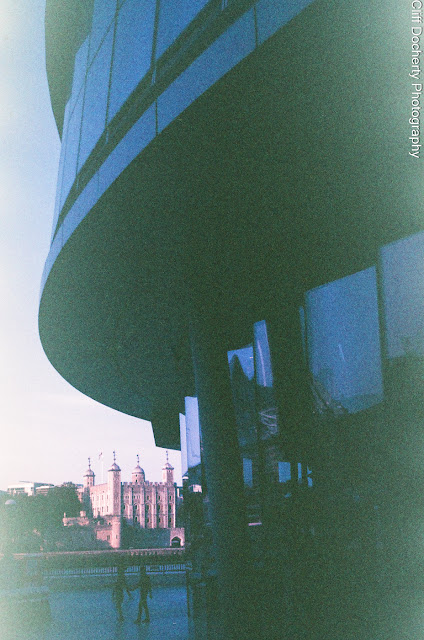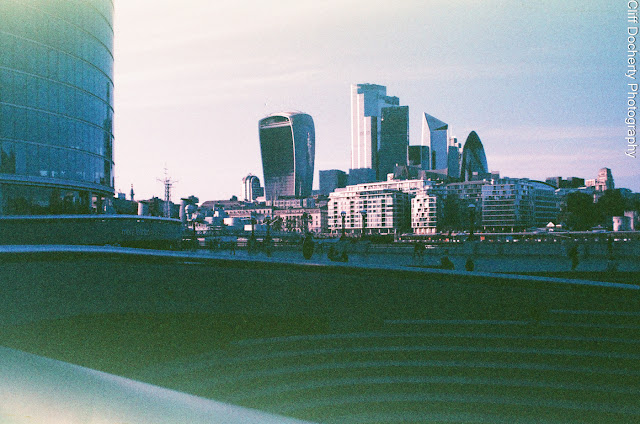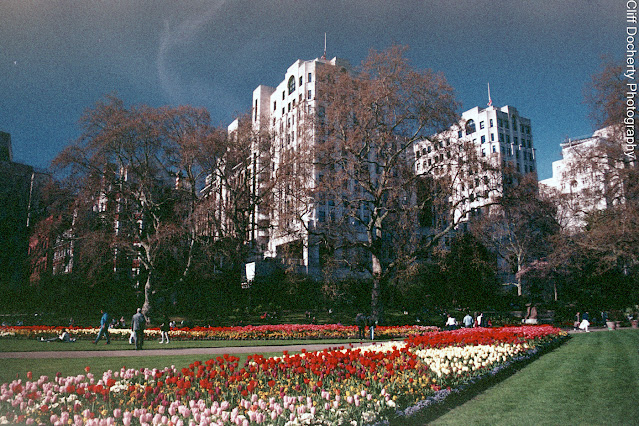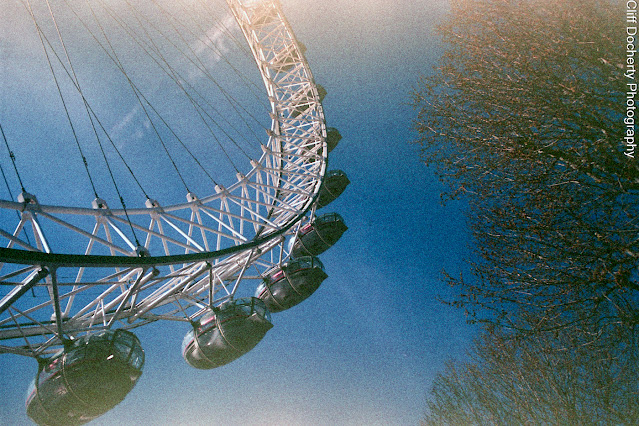It's past its sell by date. Well past its sell by date. In fact its 40 years expired. It is, in the immortal words (nearly) of Monty Python, an ex-film. Not stunned, not resting and definitely not pining for the fjords though it does have a lovely blue plumage, well, box. We're talking about the an East German Orwo colour negative film, or in the case of these examples, two. One dating from 1982 and one from 1991, NC 19 and 21 respectively. The numbers referring to the speed using the German DIN scale, 19 being ISO 64 and 21 equivalent to 100.
Orwo film was established in the German Democratic Republic, or East Germany, in 1964 in the factories originally set up by Agfa in 1910 which fell into its territories following the partition of Germany after Word War Two. Production ceased in the 90's after reunification but the brand has been reinstituted in recent years to produce new film products to market. In the post-war period though the consumer-level films were, for people in the West, something of an oddity. The black and white and slide films found their way to the West and sold in steady numbers, but the colour negative film used an incompatible process based on a different formula to the standard used everywhere else. Cold processed at 20 degrees with a different chemical recipe commercial labs in the west couldn't handle the films. Also, the quality of the films were highly variable causing no small amount of despair to consumers stuck behind the Berlin Wall. At its best NC19/21 produced an interesting palette quite strong on reds (handy for all those flag waving marches perhaps) but a little weak on contrast and middle shades of colour. Shadow detail was poor so high contrast shots didn't turn out all that well, leading to a flatness in the images. But you didn't always get a good batch. The slide films were generally better with more punch but in common with all reversal film. lacked the exposure latitude.
Back in the 80's I worked for a camera store and from time to time people would drop off these films and we'd have to say no to them. I'd just got back from a trip to West Berlin and had made a trip over the Wall to the East not knowing anything about Orwo at the time not knowing about the film at the time, or I'd have had a go at it myself. By this time I'd developed an intense fascination with the then divided country and noticed the photography in all the Eastern publications had this odd flat tone and eventually worked out it was the film stock, so I was really keen to get hold of it. Of course, it was impossible. But one day a customer finding it wasn't possible to develop his films asked if I could could get rid of his unused films as they were no use to him, and I asked if I could have them. Customer and boss both thought I'd gone made but were happy enough. In the meantime I found an address in East Germany for hm and other customers to send his Orwo film to - no mean feat in those days before the internet, much less behind the 'Iron Curtain'.
After shooting the two films I packaged them off to Wolfen in the GDR and about a fortnight later my bright orange negatives came back in a single roll, without charge. The first film was a photo walk around my home city of London, the second was family pics and portraits so I could get a sense of skin tone and domestic subjects. Pretty much as I expected the pics had that same flatness and strong reds found in all those official GDR journals and leaflets. So it was an interesting experiment and my current obsession dealt with I moved on to my next thing. Dead parrots probably.
The years and decades fall away, so does the Berlin Wall, communism and a divided continent and somehow I find myself with ten rolls of 30-year expired NC21 and 2 of 40-year expired NC 19, and no notion of how it's been stored except the boxes look in good condition, which doesn't mean a thing. So first question, is anyone even developing these films? Several vexatious hours later, yes someone in Poland where these films were also sold does a legacy processing service, making up the chemicals as needed. So we were go.
The advice about expired film is conflicting. The science says ignore expiry dates, that they're a guide. What matters is storage, speed, and type of film. Well that makes sense. This nonsense about one stop per decade is exactly that. Think first, is it a fast film, is it a slower film? Slower films store better. Was it cold stored, was it subjected to temperature changes? That impacts it. Then think about explore adjustment after you've answered those questions. There are a lot of good guides on the web, be picky. Look for something authoritative.
So what did I do? I shot the 40 year old one first and because the box didn't look so good I decided it hadn't been stored well and instead of shooting at EI 64 i went for 25. I still barely got an image on some of the frames but what I did get was mighty creative 😆 I wouldn't want to try and sell these things but you know, I might!
I had more success with the second film. Grain like golf balls and big shifts in colour and loss of sensitivity at the edges of the negative where background radiation has worked its way into the cannister, but again, the result it quite creative and not unattractive. Expired film isn't really my thing but this was an unusual film so it was worth the try and to remember the time I tried something most people in the West didn't get to try. Huge thanks to the guys in Poland for the processing.
City of London - 40 Year Expired Orwocolor NC19
Embankment Gardens Tulips - 30 Year Expired Orwo NC21
London Eye - 30 Year Expired Orwo NC21






Comments
Post a Comment